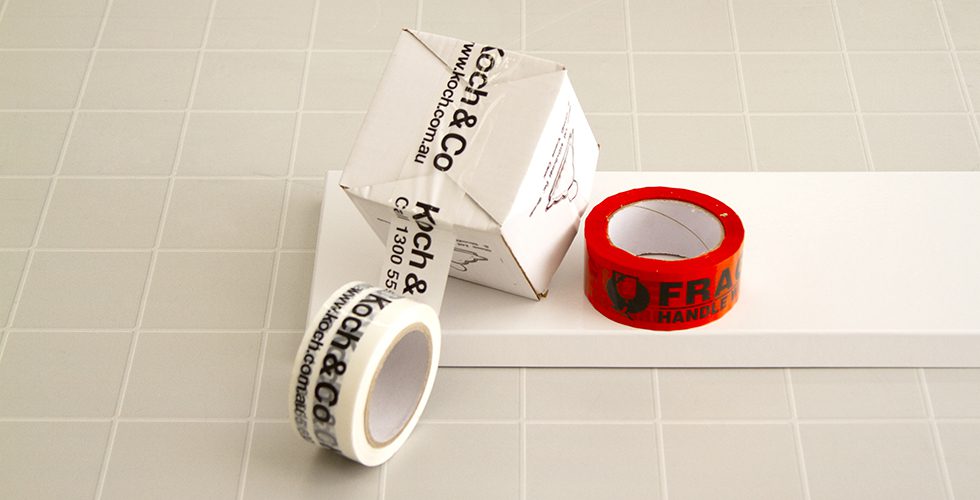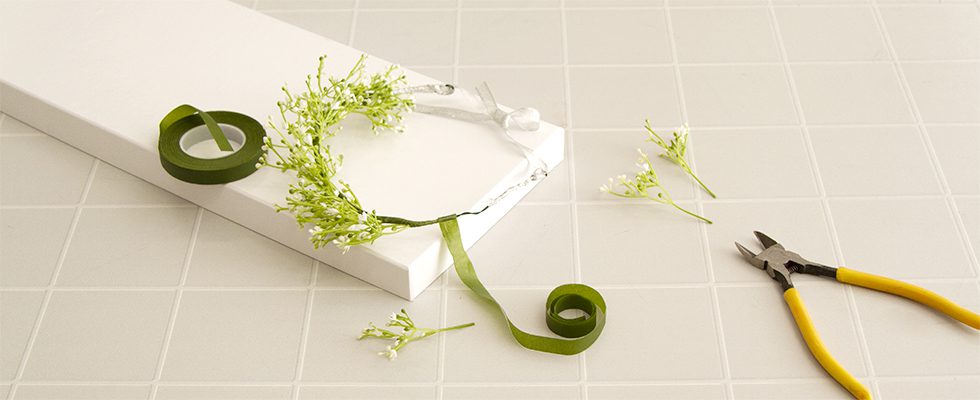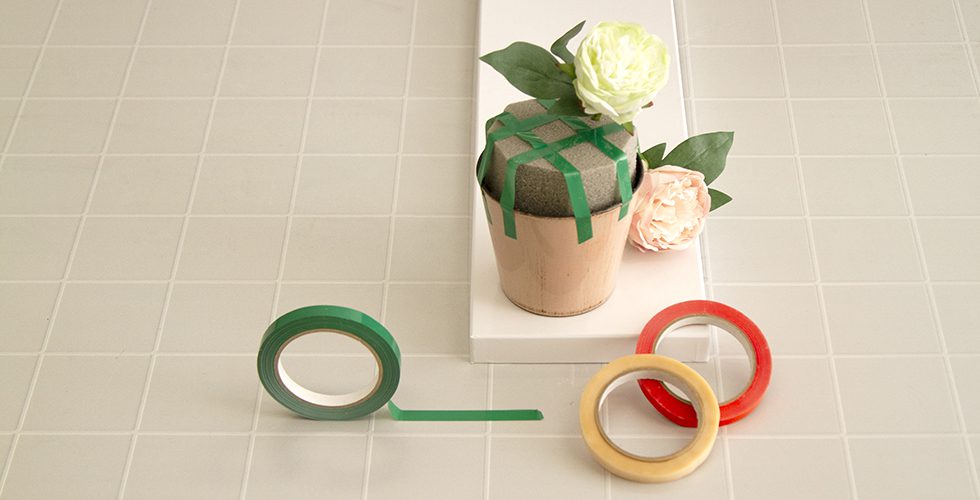
A Guide To Adhesive Tapes – All You Need To Know About Adhesive Tapes
When we think of adhesive tapes we immediately think of sticky tape. Before pressure sensitive adhesive tapes (PSA’s) were invented, glue and paper was used to secure and bind packaging. The discovery of sticky tape came about when a scientist working for 3M back in 1925 discovered masking tape. Then, the same scientist discovered cello tape which was named Scotch® Magic Tape. These inventions paved the way for the invention of a very wide variety of tapes we see today.
What is adhesive tape?
Adhesive tape or pressure sensitive adhesive tape known as PSA tape has many names such as sticky tape, cello tape or self-stick tape. They are made from such materials on a roll as plastic film, cloth, paper or even metal etc. and have a coating of pressure sensitive adhesive. The adhesive will stick without requiring water or heat. The glue used has a variety of tackiness and will either glue or unglue easily or will adhere on first press. Some tapes like Parafilm are called bondage tape that will adhere to its self without having any sticky adhesive. Other tapes might be double sided tape with adhesive on both sides. Many tapes are sensitive to the environment and are eco-friendly such as kraft paper water adhesive tapes.
How is adhesive tape made?
Sticky tapes are made in a similar fashion to ribbon. Wide rolls of film are coated with adhesive and then run through a slitting machine to create tapes of various widths. These films are wound onto rolls at specific tensions to allow the film to be split. Too much or not enough tension will cause a fault in the tape. Tension and winding will add a little stretch in the film. Faults amy appear in adhesive tapes and are called telescoping, gearing or gapping. If the winding and slitting processes are performed with care, then the only other issue that may affect your tapes are how you store the tape.
What is the best way to store adhesive tape?
Sticky tapes do not have a use by date and their performance will be less effective as the tape gets older. Also, most tapes do not like to be stored in high temperatures, ultra violet light or direct sunlight and with other chemicals. Follow the manufacturer’s instructions and also store in a dry place. Practising this will extend the life of your tapes and make sure they work well every time.
A comprehensive guide of tape types.
To understand more about adhesive tapes, in this comprehensive guide we list a variety of the 10 most common groups of adhesive tapes, we detail why they are different, how they function and what the various applications are.
1. Sticky Tape

Sticky tape is known via a variety of different names depending on the country and use. Often called cello tape as well, it has two most popular widths of 12mm and 18mm. These widths fit easily on a sticky tape dispenser.
- Cellulose tape which is made from cellulose film. Cellulose film is not a plastic and will become a dark colour over time and possibly become brittle.
- Sellotape is a generic term used for similar tapes of sticky tape or adhesive cello tape. It is a general purpose clear tape with many uses in home, office or industry.
- Scotch Tape is a 3M brand product name and is identical to Sellotape. This tape is available in a number of widths and adhesive strengths for various uses.
2. Packaging Tape

Packaging tape is often called packing tape, parcel tape or box sealing tape. This tape is commonly manufactured in 48mm wide rolls, is pressure sensitive and made from adhesive coated polypropylene, BOPP or polyester film. The extra width makes taping up cartons simple and fast. It usually is worked with using a hand operated tape gun dispenser.
- Water Activated Tape (WAT) is a kraft paper tape with a gum glue adhesive that is reactivated by water. The main advantages of eco-friendly Water-Activated tape are that it adheres to the box and becomes one which makes almost impossible to peel off and creating strong, secure tamper resistant seal. It usually is more cost effective than traditional pressure sensitive self-adhesive packaging tape. The tape is non-reinforced kraft paper or reinforced fiberglass kraft paper which can either be water activated or self-sealing.
- Filament tape is made from polypropylene or polyester film using embedded fiberglass filaments along the length of the tape. It is super strong and mostly used in production line packaging and machines as it will not break easily. Best for heavy cartons.
- Tear tapes are narrow filament or polypropylene pressure sensitive or heat activated adhesive tapes used as a tear or anti-tampering strip to make opening packaging on consumer goods such as DHL envelopes or cigarette packets.
3. Double-sided Tape
Double-sided tape has adhesive on both sides. If you require sticking two surfaces together, this is the best tape for the job.
- Lingerie tape is a double sided tape used in clothing and is also called “cleavage tape”, “fashion tape”, or “tit tape”.
4. Bondage tape

Bondage tape is a tape that will adhere to its self without having any sticky adhesive.
- Parafilm is a well-known bondage tape used in floristry as well as for tree grafting.
- Eco Paper floral tape is also a bondage tape similar to Parafilm but made from paper rather than polypropylene.
- Elastic Bouquet tying tape is very similar to parafilm in function and use. The material is similar to elastic bra straps or dance elastic. It is mostly used to wrap around bouquets and corsages to hold them tight.
5. Duct Tape or Gaffer Tape
Another brand name for this tape is Gorilla tape. These tapes are usually 48mm wide and have a very strong adhesive of rubber or plastic.
- They can easily be torn on the long part of the tape but almost impossible to tear on the horizontal.
- Available in many colours but most common colours are black and grey for industrial situations.
- This tape is used by panel beaters, electricians, film crews.
6. Fabric Tapes similar to Duct Tape

- Pot tape is a water proof tape made from cloth fabric tape exactly like gaffer tape. It is usually either 6mm or 12mm in width and is extensively used in floristry. The name “pot tape” has been derived because it is mainly used to secure floral foam into pots of bowls.
- PVC Bunching tape is made from PVC is not very stretchy and is used for sealing or bunching fresh produce. It is waterproof, has high tactile glue and because it does not stretch it is like using string or twine.
- A spike in theatrical terms is a marking on a theatre or stage. Spike Tape is a style of gaffer tape and will bond to uneven surfaces. This tape is also waterproof, easy to unwind, tears easily and wears very well. Spike Tape has a smooth controlled unwind and tears easily by hand. This tape is also used for color-coding, marking boxes, and directional signals in dark areas.
- Friction tape – Tape made of cloth which has been impregnated with a rubber-based adhesive, used mostly to increase grip or friction.
7. Electrical Tapes
The typical electrician tapes are a vinyl tape used to insulate electrical wiring. A soft tape available in many colours and is easy to pull and stretch so you can cut it by hand.
- Kapton tape – Kapton® Tapes are made from Kapton® polyimide film with silicone adhesive. Used in electronic manufacturing as an insulation and protection layer on electrostatic sensitive and fragile components.
- Self-amalgamating tapes have a non-tacky adhesive stretchy tape that is a strong seamless rubbery, waterproof electrical insulator. This tape is mostly used to wrap around electrical joints, hoses, pipes and cables.
8. Trade Tapes
- Masking tape is a pressure-sensitive tape made of a crepe paper backing and easily released pressure-sensitive adhesive. Its key feature is that is easy to tear by hand and write on. It is usually available in a variety of widths from 30mm to 48mm. Masking tape is mainly used to mask areas in preparation for painting. It peels of easily and leaves no residue.
- Painters tape is very similar to masking tape but may have a slightly stronger adhesive for a variety of surfaces.
- Floor and Line marking vinyl tapes are hard wearing heavy duty tapes used for floor line marking in warehouses and industrial spaces. This tape is often used as a substitute to creating line markings with paint
- Road marking tapes are a heavier grade of tape than line marking tape made from preformed polymer and can be applied permanently or temporarily to the pavements and road surfaces
- Security tapes are used for packaging of consumer goods to help indicate if goods have been opened. This enables the consumer to be aware as well as the seller of the goods additional security.
- Speed tape is an aluminium based pressure sensitive tape that has similar properties to duct tape. The main advantages of speed tape are its resistance to water, solvents, and high variance of temperatures as well as being reflective. It is widely used on aeroplanes for minor temporary repairs.
9. Medical or Surgical Tapes and First Aid tapes
- Surgical tape or medical tape is a pressure sensitive tape adhesive tape used as a bandage or wound dressing. These tapes come in a variety of uses and contain either hypoallergenic adhesive, zinc oxide to prevent infections and are microporous to allow skin to breath
- Micro-paper breathable medical tape is a non-stretch pulp paper tape which is microporous (tiny holes) and has hypoallergenic pressure sensitive adhesive. It is used to secure dressings and bandages firmly onto skin and removes easily without damaging the skin and allow air to circulate.
- Trans-pore polyethylene non-stretch tape is a translucent surgical tape with a strong adhesive. This tape is breathable, hypoallergenic, allows moisture to evaporate and easy to tear even when wearing gloves. Predominately used when a stronger adhesive tape is required in medical procedures.
- Elastic therapeutic tape or KT tape (kinesiology tape) is an elastic-cotton strip using acrylic adhesive making it thin and stretchy like human skin. Does not hold moisture and helps avoiding skin irritation.
- Steri-Strips are small waterproof adhesive strips used to close small wounds in a fashion similar to stitches.
10. Sport Tapes
- Zinc Oxide tape or Sports Strapping Tape is made from non-stretch cotton/rayon material with zinc oxide adhesive. Strong and durable while tolerating moisture; it is widely to support damaged soft tissue, ligament injuries, wounds and cuts.
- Cushioning or Grip Tape is used for a variety of sporting equipment to cushion constant knocks. Such things like tennis and squash rackets, cricket bats and hockey sticks.
The post A Guide To Adhesive Tapes – All You Need To Know About Adhesive Tapes appeared first on Koch & Co Blog.